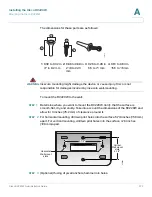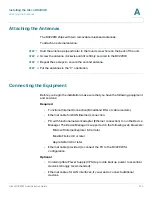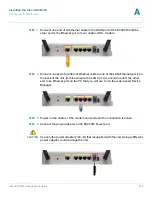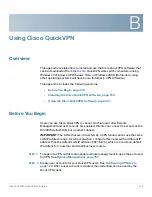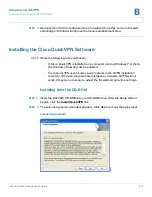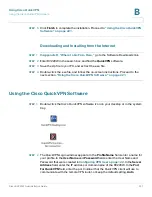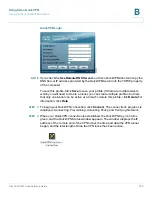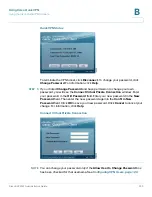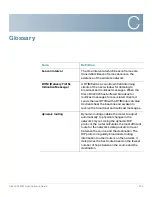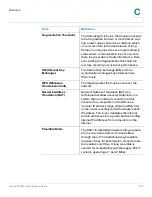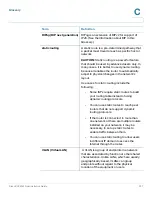
Glossary
Cisco RV220W Administration Guide
226
C
RADVD (Router
Advertisement Daemon)
RADVD is an open-source software product
that uses the Neighbor Discovery Protocol
(NDP) to listen for router solicitations in the IPv6
LAN. It responds with router advertisements to
support stateless address auto-configuration.
When a new host connects to the network, it
sends a request for its configuration
parameters, and the router responds with a
router advertisement packet that contains the
network-layer configuration parameters
including IPv6 prefixes. The node takes the
prefix and extends it to a full 128 bit address by
adding an EUID based on its hardware address.
Request to Send (RTS)
Threshold
The packet size, in bytes, that requires an RTS/
Clear to Send (CTS) handshake before sending.
A low setting can be useful in areas where many
client devices are associating with the wireless
device, or in areas where the clients are far
apart and can detect only the access point but
not other clients. Although a low threshold value
consumes more bandwidth and reduces the
throughput of the packet, frequent RTS packets
can help the network to recover from
interference or collisions.
Routing Information
Protocol (RIP)
This protocol uses use distance vectors to
mathematically compare routes to identify the
best path to any given destination address. RIP
sends routing-update messages at regular
intervals and when the network topology
changes. Upon receiving a RIP message, a
router updates its routing table and transmits
the updates to other routers. RIP prevents loops
and has features to provide stability despite
potentially rapid changes in a network's
topology.
RIPv2 supports subnet masks, allows more
information to be included in RIP packets, and
provides a simple authentication mechanism
that is not supported by RIP.
Term
Definition

